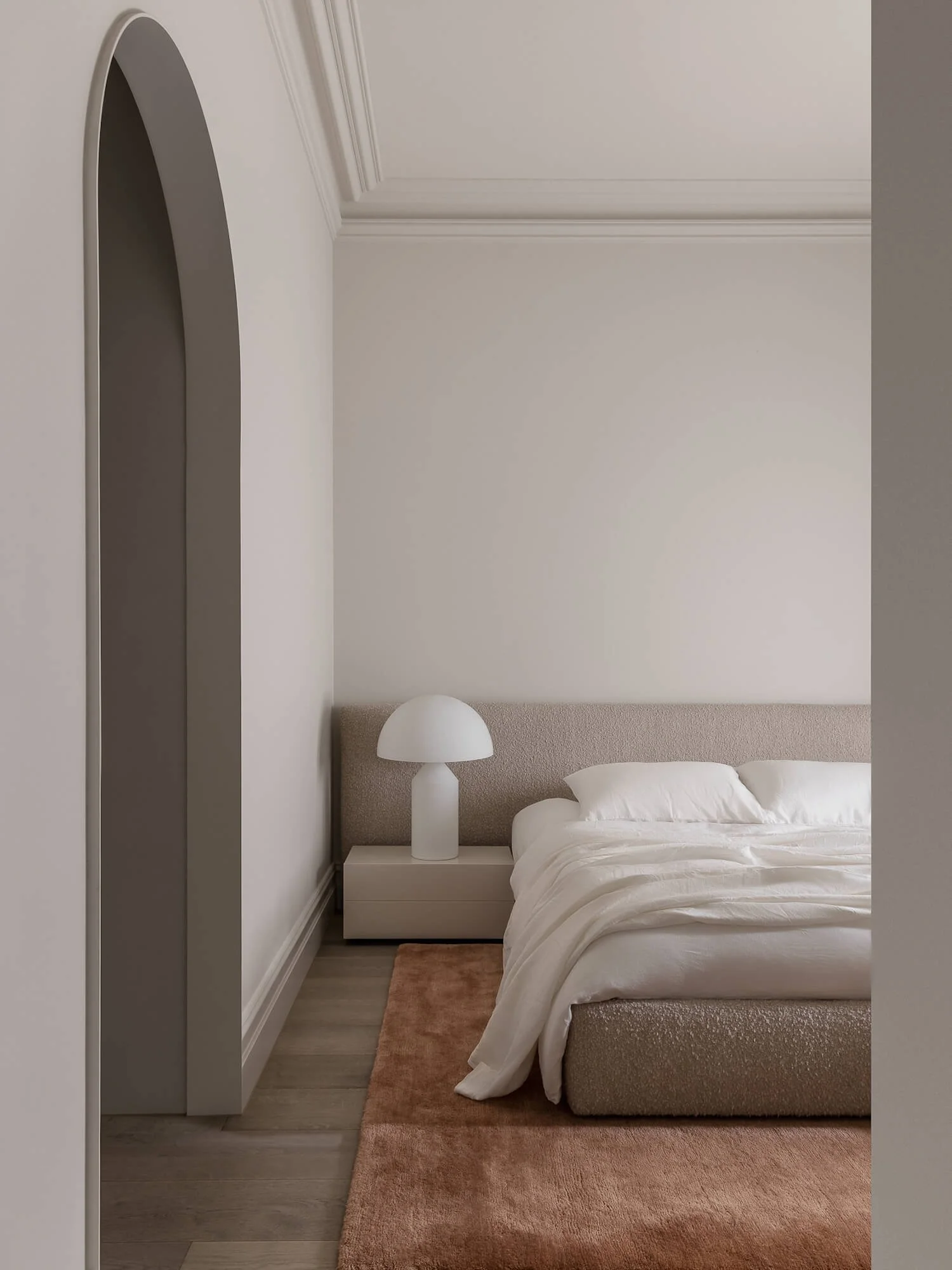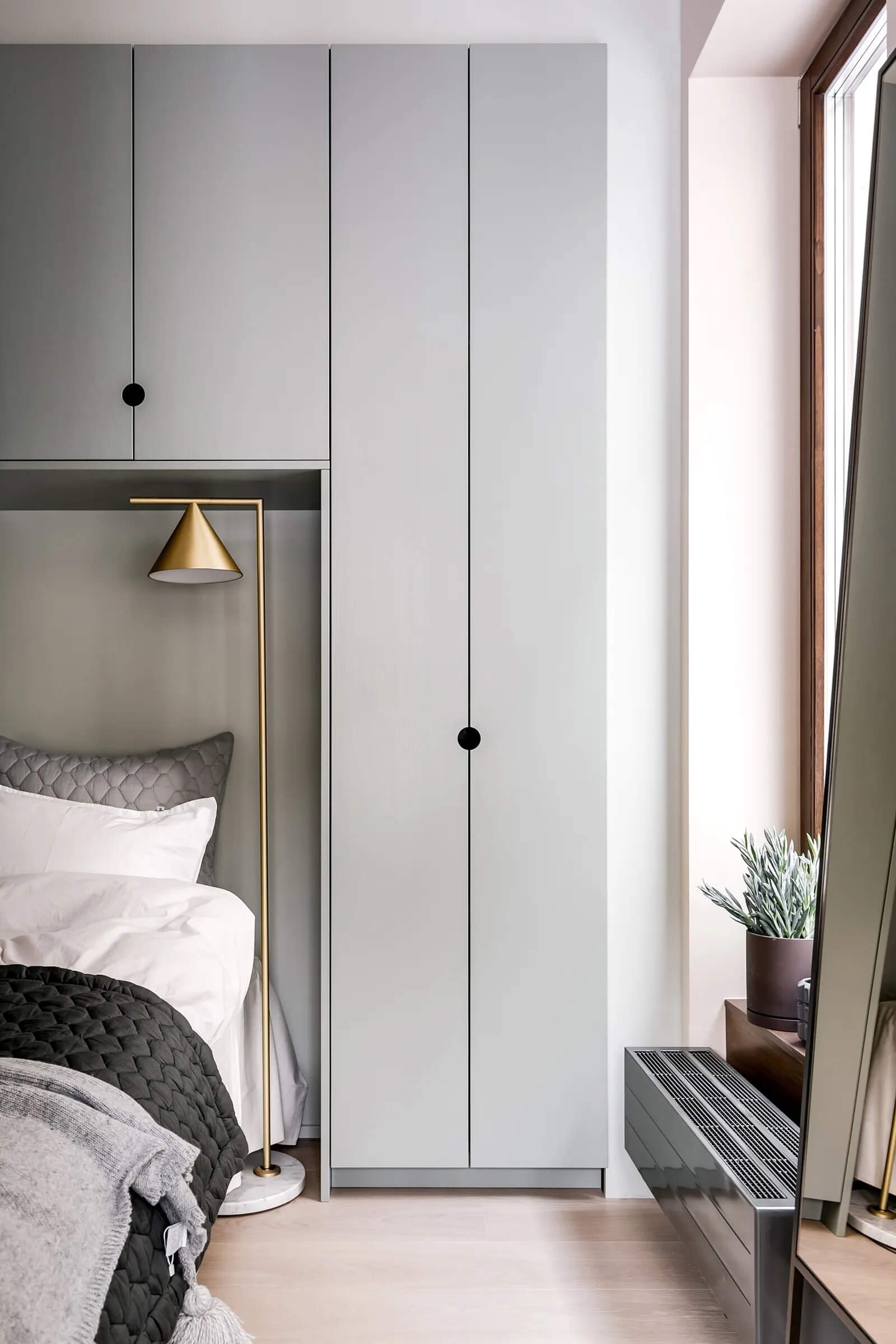How Interior Design Can Enhance Your Sleep Quality
Either you’re getting it or your not - sleep is one of the most important aspects of our health and well-being, yet it is often overlooked and undervalued.
We all know the feeling of struggling through a day tired and cranky, with nothing left in the tank. A good night’s sleep is the ultimate luxury for many of us. According to the World Health Organization (WHO), sleep is essential for our physical and mental health, our quality of life and safety. In our busy fast-paced world, many people do not get enough sleep or have trouble sleeping. This is due to a variety of factors, including stress, anxiety, lifestyle and a poor sleep environment. On World Sleep Day let’s explore the importance of interior design and our bedroom for health and wellness.
A calming colour palette of soothing blue and white.
Design by: Interior Couturier
Why Design and Sleep Environment Matter
It may not immediately spring to mind the impact design has on your quality of sleep. However, our bedroom can have a significant impact on our sleep quality, health, and well-being. As an interior designer, I know there are many factors we can influence in our bedroom. A well-designed bedroom can help you relax, reduce stress, and fall asleep faster. A poorly designed environment can lead to discomfort, stress, and sleep disturbances. Here are four reasons why design and sleep environment matter for health and wellness:
4. Stress Reduction
A well-designed bedroom can help reduce stress and promote relaxation. Stress is a significant factor in sleep loss and poor sleep. It's essential to create a sleep environment that promotes relaxation and reduces stress. Imagine a room with soft lighting, calming colours, and comfortable bedding. Sounds good, right? These elements all contribute to a sense of peace and tranquillity, which helps you fall asleep faster and stay asleep longer.
Maximising the space on the nightstand by adding a wall sconce rather than a bedside lamp.
Design by Alicia Holgar. Photography by: Shannon McGrath
3. Sleep Quality
Sleep quality is directly related to the quality of your sleep environment. If your bedroom is too noisy, too bright, too hot, or too cold, it can disrupt your sleep, leading to poor sleep quality. The ideal sleep environment is dark, quiet, cool, and comfortable. Here are some tips for creating an ideal sleep environment:
Keep the room cool, in steamy Singapore, air conditioning is a must
Keep the room quiet and reduce external noise
Use a comfortable supportive mattress and pillows
Use soft, breathable bedding in natural fibres like cotton, bamboo or linen
Keep the room well-ventilated
Curtains to manage the light coming into the room. Living in a city, there is a lot of light pollution that filters inside. Use blackout curtains or shades to block out light, and sheer day curtains for added privacy during the day
Avoid electronics in the bedroom – this includes TV, phones and computers
The darker your bedroom, the better your sleep. Utilise dim lighting, nightlights and shaded lamps to create a relaxing atmosphere and wind down
This minimalist bedroom is comfortable and cozy using quality bedlinen, a soft rug and an oversize upholstered headboard.
Design by Selzer Design Studio. Photography by Timothy Kaye.
2. Productivity
There is nothing worse than struggling through a day, fuelled by coffee and anxiety. Attacking your “to-do” list seems like an uphill battle. A good night's sleep is essential for productivity and performance. Good sleep habits play a big part in restful sleep. Try to keep a regular bedtime, limit your access to blue light (smartphone/computer/TV screen) and prioritise sleep over Netflix binging. Part of interior design is making our lives easier through functional planning. Consider how you can design to foster good habits around sleep. A well-designed bedroom can help you feel more rested and alert. This leads to better concentration and productivity throughout the day.
In a small space, get creative with storage and stow away the clutter.
Design by: Note Design Studio
1. Mental and Physical Health
Sleep is essential for mental health. A poorly designed bedroom can contribute to conditions such as anxiety and depression. Sleep is when our bodies detoxify and repair. The design elements you surround yourself with such as the colour palette and lighting can impact your mood and mental state. Calming and soothing are key words to keep in mind when designing a bedroom. Sleep is also important for our physical health. Lack of sleep can contribute to obesity, diabetes, and heart disease. The ideal sleep environment is cool and dark, which helps regulate your body temperature and promote restful sleep.
Here are some tips for creating a bedroom that's good for mental and physical health:
Opt for calming colours such as blue, green, or pale washed out neutrals
Avoid bright, stimulating colours such as red or orange. These are more appropriate for rooms where you’ll be awake and active
Use soft, dim lighting to create a relaxing atmosphere. Avoid harsh overhead lighting, especially over the bed and opt for soft lighting. Dimmer switches, lamps at low level and wall sconces are your friends
Banish the clutter. Include ample storage and stow away everything you need in your bedroom
Use a rug for softness underfoot and improve acoustics
Remove the Television (or iPad). Watching TV in bed disturbs the sleep cycle, interrupts melatonin production, binge watching pushes back bedtime
Keep things in easy reach - a lamp, bedside necessities
If you have a desk in the bedroom, make a clear desk policy, so every evening it's out of sight - out of mind
Include an indoor plant. NASA research shows certain houseplants also purify the air and remove toxins like benzene, formaldehyde and trichloroethylene. Some plants to look out for are Areca Palm, Snake Plant, Rubber Plant. If you have a black thumb for house plants, try a small vase of flowers or foliage on the bedside to lift the spirits
Keep the room cool. Research has shown that the ideal temperature is 17-19 degrees Celsius. This may not be achievable in tropical Singapore, but try setting the air conditioning to 23-24 degrees Celsius. It will feel cooler and 24 degrees Celsius is often touted as the most energy efficient setting to run an air conditioning system. Our bodies are physiologically programmed to have a slight dip in core temperature in the evening. Running the air conditioning at night signals to your body that it’s time for sleep
Get your other senses involved. As an extra step, consider using aromatherapy with essential oils such as lavender or chamomile to promote relaxation
Creating the ideal bedroom for health and well-being is about creating a space that supports your physical and mental health. Invest in a comfortable mattress, control the lighting, add plants, use essential oils, create a clutter-free space, and focus on comfort to create the ideal bedroom for your health and well-being.
We all feel better after a good night’s sleep. There is a lot you can do to aid sleep by enhancing your bedroom. If you would like to update your bedroom and improve your sleep, get in touch today.





